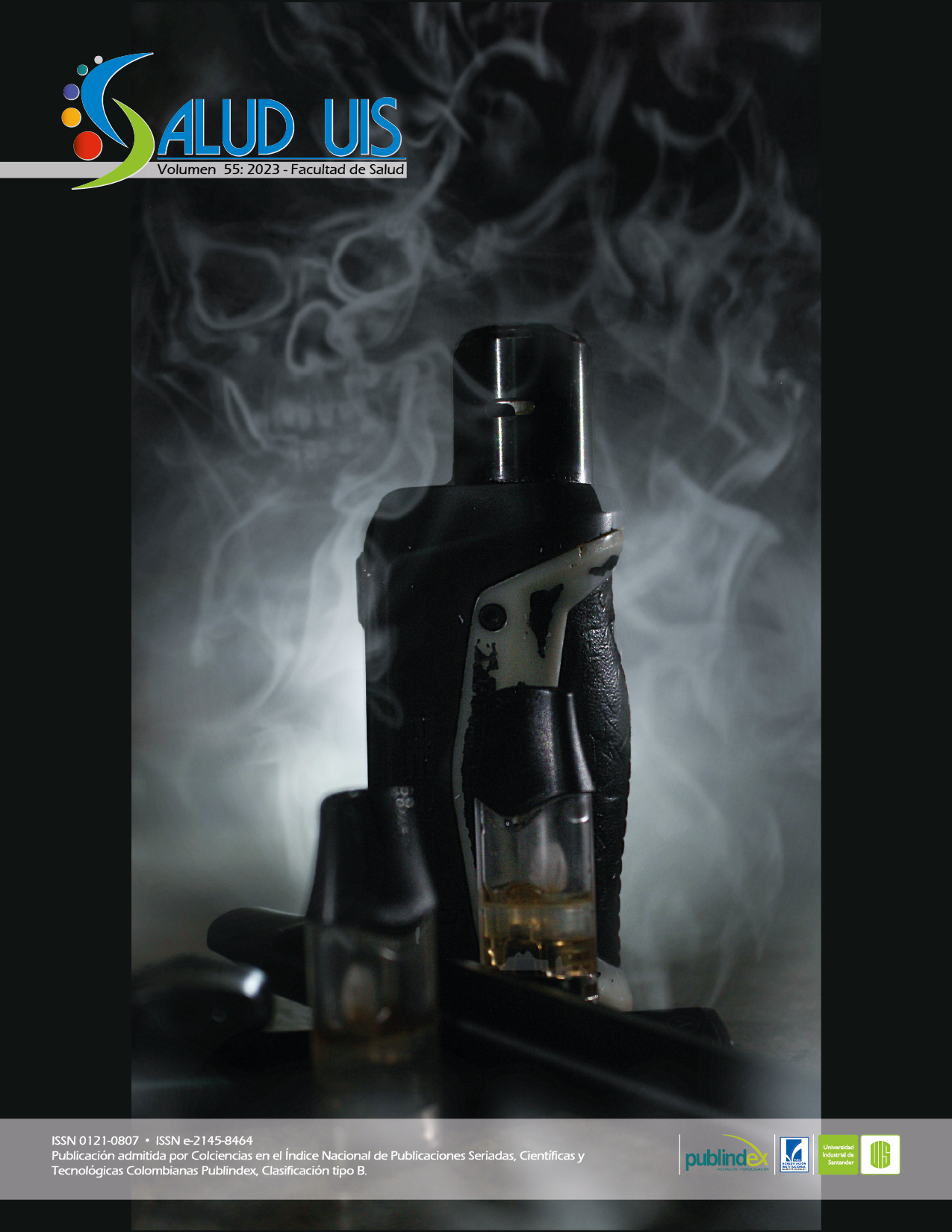Abstract
Introduction: Pathogenic bacteria with antibiotic resistance mechanisms can be acquired in ambulances when an emergency health service is provided. This scenario can generate infections associated with health care. Objective: To perform the phenotypic characterization and sensitivity profile of bacteria recovered in APH ambulances in the municipality of Medellín. Methodology: A descriptive study was conducted during the years 2017-2019 which included 10 Prehospital Care (APH) ambulances from the Medellín Health Secretariat. Sampling of surfaces and environments was carried out on ambulances and health personnel from APH (hand swabs). The presence of indicator microorganisms such as aerobic mesophiles, total coliforms, molds and yeasts was evaluated. Additionally, the presence of pathogenic microorganisms such as Staphylococcus aureus and Escherichia coli was determined. The recovered bacteria underwent phenotypic identification and susceptibility tests using the Biomérieux® Vitek 2 System, in addition Biomérieux® chromogenic media were used to detect bacteria with clinically important resistance mechanisms. Results: Gram positive Cocci were attributed to 55.4% of the bacterial isolates, 34.5% to Gram positive Bacilli and 10.1% to Gram negative Bacilli. The distribution of samples broke down as follows: Grampositive Cocci predominated in the handlers, cabin area and on stretchers; Gram-negative Bacilli predominated in medicine cabinets. The main genus recovered corresponded to Bacillus spp 25.9%, followed by Staphylococcus spp 22.3%. With the exception of Stenotrophomonas maltophilia, no bacteria with resistance mechanisms of clinical importance were recovered. Conclusion: Although bacteria with resistance mechanisms of clinical importance were not recovered, the presence of Stenotrophomonas maltophilia, a bacteria intrinsically resistant to antibiotics and associated with hospital infections, suggests that it is necessary to evaluate disinfection processes in detail and continue epidemiological surveillance of microorganisms present in ambulances.
References
Alves DW, Bissell RA. Patógenos bacterianos en las ambulancias: resultados de una recogida de muestras no anunciada. Prehospital Emergency Care 2009; 2(1): 67-74.
Schaps D, Godfrey AW, Anderson DJ. Risk of methicillin-resistant Staphylococcus aureus (MRSA) and vancomycin-resistant Enterococcus (VRE) acquisition during ambulance transport: A retrospective propensity-score-matched cohort analysis. Infect Control Hosp Epidemiol. 2022; 43(4): 442-447. doi: https://doi.org/10.1016/j.socscimed.2003.08.004
Olsson H, Olsson S, Sturesson L, Lindström V. Do we need a pandemic to improve hygiene routines in the ambulance service? A cross-sectional study. Int Emerg Nurs. 2022; 62. doi: https://doi.org/10.1016/j.ienj.2022.101171
Obenza A, Cruz P, Buttner M, Woodard D. Microbial contamination on ambulance surfaces: a systematic literature review. J Hosp Infect. 2022; 122: 44-59. doi: https://doi.org/10.1016/j.jhin.2021.12.020
Alvarez-Aldana A, Henao-Benavidez MJ, Laverde-Hurtado SC, Muñoz DM, López-Villegas ME, Soto-De León SC, et al. ¿Emergency ambulances potential source of infections? An assessment of cleaning and disinfection procedures. Interdiscip J Epidemiol Pub Health [Internet]. 2018; 1(2): e–014. doi: https://doi.org/10.18041/2665-427X/ijeph.2.5368
Fariña N. Resistencia bacteriana: un problema de salud pública mundial de difícil solución. Mem Inst Investig Cienc Salud [Internet]. 2016; 14(1): 4-5. doi: https://doi.org/10.18004/Mem.iics/1812-9528/2016.014(01)04-005
Farhadloo R, Shojaei S, Goodarzi-Fard J, Reza-Azadeh M, Parvaresh-Masoud M, Shouri-Bidgol A, et al. Evaluation of bacterial contamination on pre hospital ambulances in Qom University of Medical Sciences of Iran in 2015. Arch Hyg Sci. 2016; 5(3): 192-198.
Varona-Barquin A, Ballesteros-Peña S, Lorrio-Palomino S, Ezpeleta G, Zamanillo V, Eraso E, et al. Detection and characterization of surface microbial contamination in emergency ambulances. Am J Infect Control. 2017; 45(1): 69-71. doi: https://doi.org/10.1016/j.ajic.2016.05.024
Vikke HS, Giebner M, Kolmos HJ. Prehospital infection control and prevention in Denmark: a cross-sectional study on guideline adherence and microbial contamination of surfaces. Scand J Trauma Resusc Emerg Med. 2018; 26(1): 71. doi: https://doi.org/10.1186/s13049-018-0541-y
Farhadloo R, Goodarzi Far JG, Azadeh MR, Shams S, Parvaresh-Masoud M. Evaluation of bacterial contamination on prehospital ambulances before and after disinfection. Prehosp Disaster Med. 2018; 33(6): 602-606. doi: https://doi.org/10.1017/S1049023X1800095X
Alrazeeni D, Al Sufi MS. Nosocomial infections in ambulances and effectiveness of ambulance fumigation techniques in Saudi Arabia. Phase I study. Saudi Med J. 2014; 35(11): 1354-1360.
Díaz C, Laverde C, Sánchez M. Las ambulancias como reservorios de microorganismos que favorecen el desarrollo de infecciones en atención prehospitalaria. [tesis]. Medellín, Colombia: Universidad CES; 2017. Disponible en:http://bdigital.ces.edu.co:8080/jspui/bitstream/10946/318/1/Ambulancias_como_reservatorios.pdf
Zúñiga CIR, Caro LJ. Transportando infecciones nosocomiales: agentes patógenos en ambulancias. Rev Enfer Infec Pediatr. 2013; 26-27(103): 246-248.
Ro YS, Shin SD, Noh H, Cho SI. Prevalence of positive carriage of tuberculosis, methicillinresistant Staphylococcus aureus, and vancomycinresistant Enterococci in patients transported by ambulance: a single center observational study. J Prev Med Public Health. 2012; 45(3): 174-180. doi: http://doi 10.3961/jpmph.2012.45.3.174
El-Mokhtar MA, Hetta HF. Ambulance vehicles as a source of multidrug-resistant infections: a multicenter study in Assiut City, Egypt. Infect Drug Resist. 2018; 24( 11): 587-594. doi: http://doi.org/10.2147/IDR.S151783
Gil-Gil T, Martínez JL, Blanco P. Mechanisms of antimicrobial resistance in Stenotrophomonas maltophilia: a review of current knowledge. Expert Rev Anti Infect Ther. 2020; 18(4): 335-347. doi: https://doi.org/10.1080/14787210.2020.1730178

This work is licensed under a Creative Commons Attribution 4.0 International License.
Copyright (c) 2023 Clara María Duque-Restrepo, Claudia María Cuervo-Araque, Catalina Villa-Sánchez, Mayra Fuentes, Juliana Tobón-Ospina, Melisa Arroyave-Rendón, Jorge Sanchéz-Becerra
